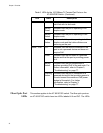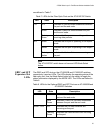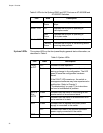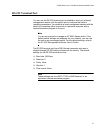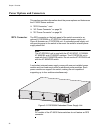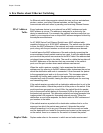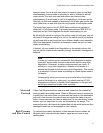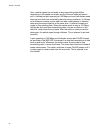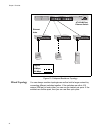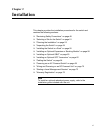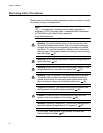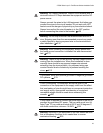Chapter 1: Overview
42
How a switch signals an end node to stop transmitting data differs
depending on the speed and duplex mode of the end node and switch
port. A twisted pair port operating at 100 Mbps port and half-duplex mode
stops an end node from transmitting data by forcing a collision. A collision
on an Ethernet network occurs when two end nodes attempt to transmit
data using the same data link at the same time. A collision causes end
nodes to stop sending data. When the switch needs to stop a 100 Mbps,
half-duplex end node from transmitting data, it forces a collision on the
data link, which stops the end node. After the switch is ready to receive
data again, the switch stops forcing collisions. This is referred to as back
pressure.
A port operating at 100 Mbps and full-duplex mode uses PAUSE frames,
as specified in the IEEE 802.3x standard, to stop the transmission of data
from an end node. Whenever the switch wants an end node to stop
transmitting data, it issues this frame. The frame instructs the end node to
cease transmission. The switch continues to issue PAUSE frames until it
is ready again to receive data from the end node. This is referred to as
flow control.



